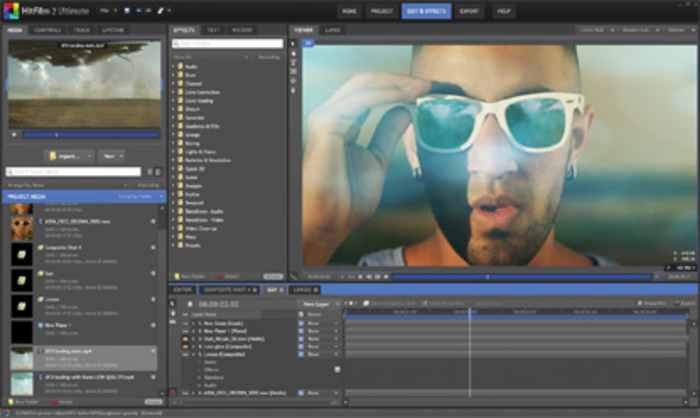Sony Vegas Pro 11 Editing Tutorial Pdf

Test Drive Unlimited 1 Free Download Full Version Pc. Speed up your color grading and finishing! This video tutorial teaches how to do primary, secondary and some pretty advanced color correction in Adobe Premiere Pro CS5.5. Windows Movie Maker not working? Here are the best Windows Movie Maker alternative to fit specific video editing needs. It's important for the aspiring.
Using a green screen is a fast and easy way to come up with some really creative video. If you don’t want to use, you can use ‘ chroma key tool to personalize your green screen for your specific video project needs. Watch this tutorial to learn how: Or follow these simple steps: 1) Import the footage with the green screen and place it on Track 1 in your timeline sequence. 2) Import the video or image you wish to replace the green with and place it on Track 2 on the timeline. 3) Use the Chroma Keyer as an effect on Track 1.
You can do this two ways: • Find Chroma Keyer in the Video FX tab and drag it into Track 1 • Click the Event FX button on the clip itself and select Sony Chroma Keyer 4) Above the preview video, turn on “Split Screen View” and set it to FX bypassed. This will give you clip you want to chroma key on the left side of the video preview and the new image on the right. 5) Click on the Event FX button on Track 1 to open up the Chroma Keyer settings.
Under the color select the little eyedropper and use it to select the green color in the left side of the video preview. This will make that color transparent in Track 1 allowing whatever your image or video is to show through. 6) Save your project. 7) Render your project. 8) Save your project again. And that’s it! It is that simple to edit green screen footage with the chroma key tools in.
Practice your new Chroma Key skills by downloading these clips for free!
Real life material All the footage is real life recordings from my own films. No home video quality. No “we-recorded-this-for-the-tutorial” stuff. This is the real deal. Still, it’s shot with a camera and the video is 8-bit 4:2:0 MPEG-2, so we’ve got some artifacts to deal with. You’ll learn how to fix these, of course.
Not for beginners This tutorial is not meant for beginners. You’re supposed to know how to add effects, tweak settings and how to operate Premiere Pro in general. The source file is 1636 x 920 pixels, so feel free to go to Vimeo and when possible if you want better quality. Please download the free preset collection “Jarle’s Grading Tools” so you can start doing professional color grading in Premiere Pro without wasting your time on unnecessary tweaking. These tools will make sure you finish before deadline, and they work in both CS5 and CS5.5.
For presets compatible with CS6,. Note: These presets are a bit old now.
If you’re on Premiere Pro CC you should. Thank you so much. I have been looking for a way to do “selective” saturation and an effective method for fixing blown-out blue skies in Premiere. I have used every video editing suite out there, and always end up going back to Premiere Pro CS5. Avid Media Composer has its perks, but nothing that PPro can’t do.
I just find Premiere to be the fastest editor with the best user interface. I wanted to like Sony Vegas, but rendering time is outrageous, and the program is unstable. Avid edits 5d2 footage pretty well, but has to conform every clip you import – which can take up to 3 mins. Premiere will import my entire folder of clips in less than 30 secs, and has presets for HDSLRs. Jarle, thanks for this tutorial which helped me a lot! I experimented a bit with track matte keying and I just don´t get rid of one issue: Whenever I apply a Gaussian blur or any other softening filter to a mask created with Premiere´s title tool I get really nasty artifacts around the edges of my mask which are visible in the final output. I tried with alpha keying (white title on transparent) as well as luma keying (white title on black) but the effect is the same.
As far as I can see I did everything just as you showed in the tutorial – any ideas here? Thanks again, Toby. While trying to isolate and reproduce the problem, I just found out it was a global Unsharp Mask filter on the masked layer (created when duplicating the main image) interfering with the Gaussian Blur and/or the Track Matte Key for the local correction. Simply rearranging the filters on the effects stack solved the issue In this case I don´t even need it on the masked layer at all but only on the main layer below. Most times it´s really easy as soon as you find out what´s going on!
😉 But again, thanks a lot for your willingness to help, this is great!